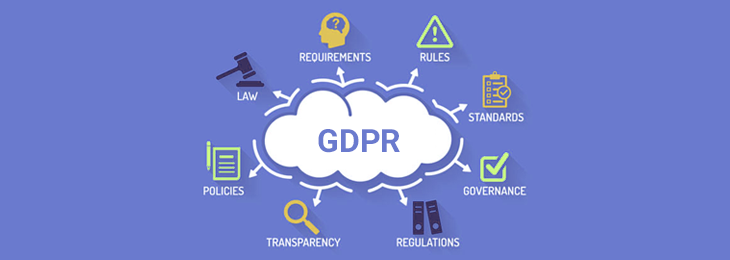
Are We Drowning in a Sea of Big Data?
As the 80’s hit song by Timbuk 3 goes ‘The future’s so bright we’ve got to wear shades’ and in the advertising, marketing and communications industry one could easily believe that to be true.
With the advent of IP delivered programmatic, dynamic creative, artificial intelligence, voice search, virtual reality, augmented reality etc. which provide the ability to personally target individuals at scale this should herald an epoch-making opportunity for the industry. However, far from it being seen as a time for confidence, it is actually proving to be a period of consternation for marketers and agencies alike.
At the heart of this marketing revolution is the sheer volume and quality of data that we now have at our disposal — as it has often been said, data is the new oil. But is it possible to have too much of a good thing? The bewildering amounts of data we now have access to represents a problem in itself because most organisations are swamped with information and are actually stymied because of it.
According to a recent Forrester study we have actually reached and breached the point of ‘peak data’ so that most of the information collected by a company cannot actually be processed, analysed and acted upon. The report estimates that anything between 60% to 73% of all the data that is currently collected is never used for any strategic purpose. The focus for many companies is how they collect and store the data without giving enough thought to how they actually use the data. Put it another away, the priority is more about 'big data' when the focus should be about 'smart data'. And the amount of data that is available is growing at exponential rate which merely exacerbates the problem as marketers can't get ahead of the game because the data horizon keeps shifting.

And it’s not like the situation is going to get any less complicated in the near future, particularly with the new GDPR (General Data Protection Regulation) legislation which comes into effect on May 25, 2018, affecting data privacy laws across 28 countries. Unsurprisingly, many organisations are sweating about the changes because of concerns over precisely what customer data they can legally retain and use. The ramifications of getting it wrong are severe with fears over compliance, confusion over what it means specifically to their business and the scary prospect of hefty financial fines if they get it wrong.
As a consequence of these seismic changes in the industry, clients are asking for a total re-evaluation of the agency model to reflect a dynamic new future. One of the most vocal on this subject is Marc Pritchard, Chief Growth & Brand Officer for the world’s biggest advertiser, Procter & Gamble. Pritchard talks about how the ‘Mad Men’ generation of agencies morphed into the publicly-held financial conglomerates, the advertising holding companies who unbundled their offerings, most notably media. He has made it very clear that he wants agencies to put their offerings back together again although it’s clear we can’t just simply put the proverbial toothpaste back in the tube. Time has moved on and new solutions are now essential.
His message is entirely unambiguous — he will pay for creativity and for what creates value with the consumer. In addition, he wants agencies to simplify their offerings — de-layer, un-silo and harmonise. And as part of his master plan he has already announced that he intends to cut P&G’s roster of agencies from around 6,000 to more like 1,250.
Carlos Ghosn, the Chairman and CEO of Renault Nissan Mitsubishi, said recently that the automotive industry will change more in the next 10 years than it has in the last 50 years. I would draw a similar analogy for the advertising community as technology and data increasingly become the drivers of the business, I believe that next decade will be dominated by reconstruction, reorganisation and reinvention creating a blueprint for the agency of the future. As an industry, given our own sense of where we have come from and thriving in every situation that has come our way, we will make changes for the better. And the time to start making those changes? Right here and right now.
NB. A version of this article first appeared in BusinessWorld under the title 'A Time For Change'
Trending
-
1 SEO Mistakes That Could Be Costing Your Shopify Store Sales
Daniel Hall -
2 Strategies for Safeguarding Assets and Investments
Daniel Hall -
3 The Role of PR Firms in Crisis Management and Damage Control
Nitish Mathur -
4 How to Make Appealing Visuals for Your E-commerce Store
Daniel Hall -
5 The Competitive Landscape of Low-Cost Carriers in Belgium: TUI Fly Belgium’s Position
Daniel Hall





Comments